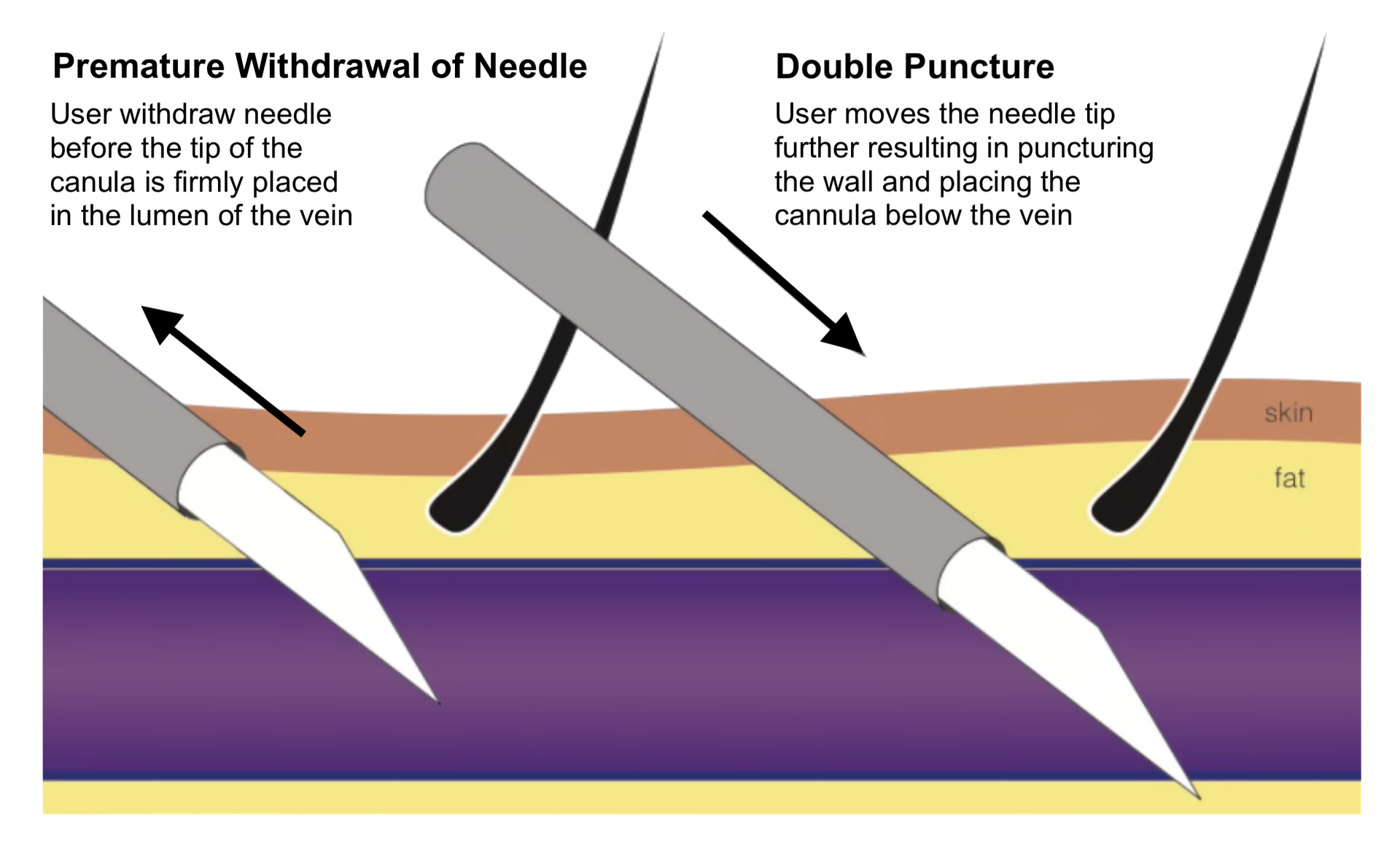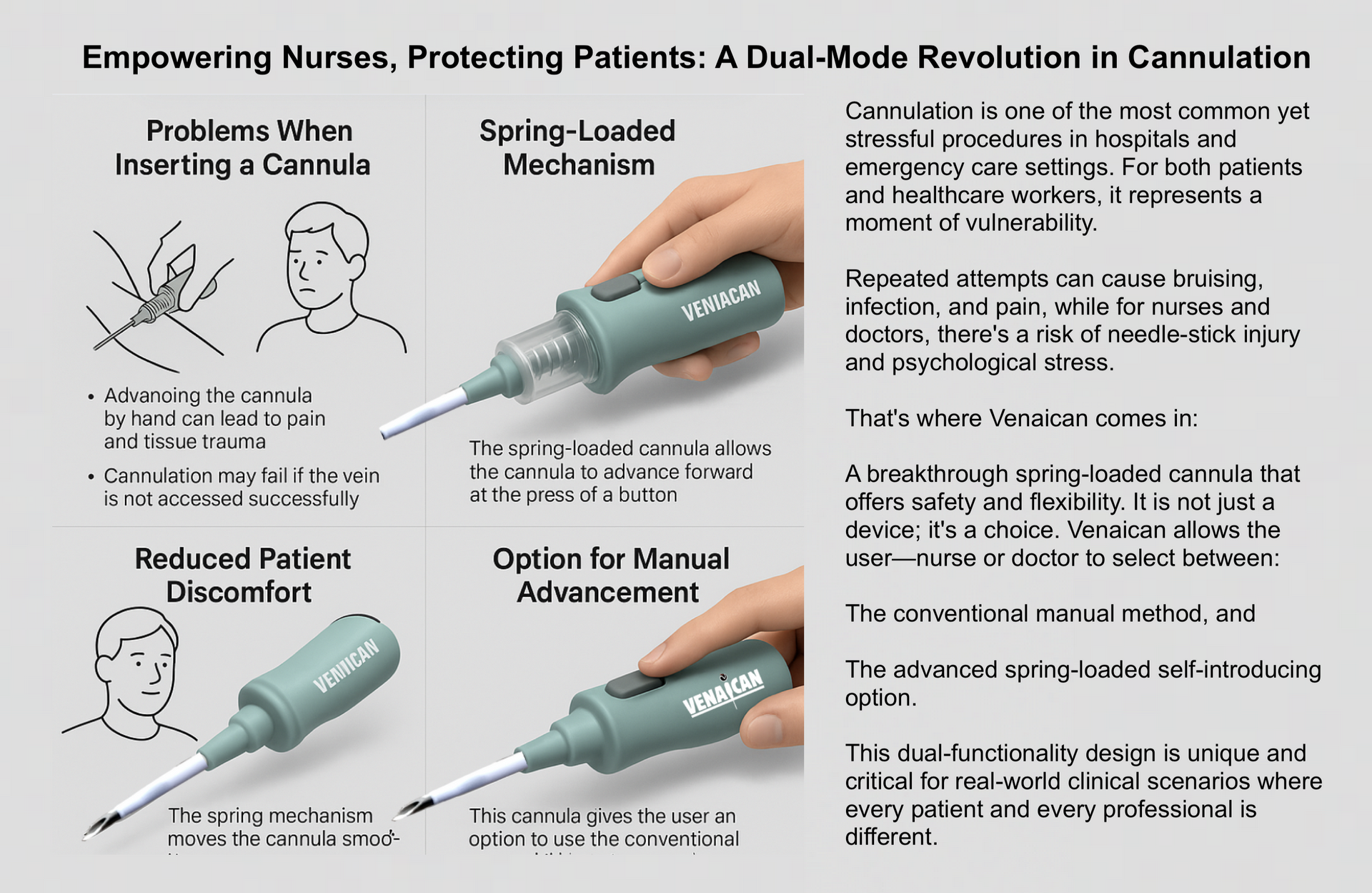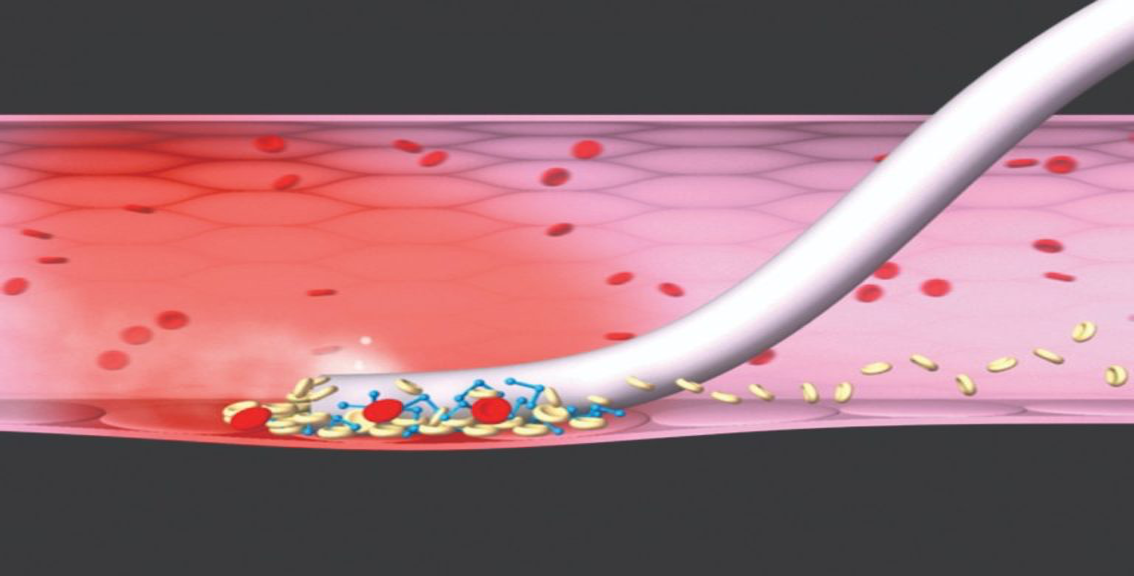Cannulation is one of the most common yet stressful procedures in hospitals and emergency care settings. For both patients and healthcare workers, it represents a moment of vulnerability. Repeated attempts can cause bruising, infection, and pain, while for nurses and doctors, there's a risk of needle-stick injury and psychological stress.
That's where Venaican comes in—a breakthrough spring-loaded cannula that offers safety and flexibility. It is not just a device; it's a choice. Venaican allows the user—nurse or doctor—to select between:
- The conventional manual method, and
- The advanced spring-loaded self-introducing option.
This dual-functionality design is unique and critical for real-world clinical scenarios where every patient and every professional is different.

Why Conventional and Spring-Loaded in One?
Healthcare is not one-size-fits-all. Some experienced clinicians prefer the feel and control of the manual method. In contrast, others—especially in high-pressure or high-risk environments—want the speed and safety of an automated, spring-loaded mechanism.
With Venaican:
- Experienced clinicians can continue using the manual approach when vein visibility and patient condition permit.
- Less experienced staff or emergency teams can switch to the spring-loaded option for faster, more accurate cannula insertion with fewer failed attempts.
Venaican ensures infection control is drastically improved by reducing exposure time and needle-stick risks. Its safety features are designed to protect both the healthcare professional and the patient, ensuring a safer cannulation procedure.This adaptability ensures that Venaican is not just a tool, but a partner that adjusts to the healthcare worker's needs, giving them a sense of control and reducing the feeling of being constrained by the system.

Side-by-Side Comparison
Feature: Conventional Method (Manual)Spring-Loaded Venaican Option
- Cannula Insertion is manually advanced by pushing the cannula hub. Released via spring after unlocking the plunger
- The Needle Retraction was withdrawn manually after cannula insertion. Retracted manually using the top plunger button post-insertion
- User Control: Full tactile control during insertion. Controlled release, smoother entry
- Training Requirement: Requires precision and experience. Easy for trained staff, reduces skill barrier
- Speed of Insertion is Slower, depending on skill and patient condition. Fast and accurate, ideal in emergencies
- The risk of Multiple Attempts is Higher, especially under challenging veins. Lower spring action reduces the failure rate
- Needle-Stick Injury Risk is Higher if not retracted safely. Significantly reduced by a controlled retraction mechanism
- Suitability: Best for stable, cooperative patients. Ideal for emergency, pediatric, and infectious patients
- Cost Effectiveness: Low-cost, no moving parts. Slightly higher cost, but safer and more efficient
- Patient Comfort May vary based on skill. Consistent comfort due to controlled motion
Venaican is a game-changer in patient-centered care, allowing healthcare workers to focus more on their patients and less on the procedure itself, fostering a stronger connection and a more empathetic approach.By offering this choice, Venaican improves safety and empowers the caregiver. No other device on the market offers this level of autonomy and adaptability. Whether in a rural clinic, a high-tech ICU, or a field hospital during a crisis, Venaican is designed to meet the needs of both patient and provider in a variety of healthcare settings.
It's not just about technology. It's about trust, safety, and choice. That's what makes Venaican a revolutionary advancement in intravenous access.

